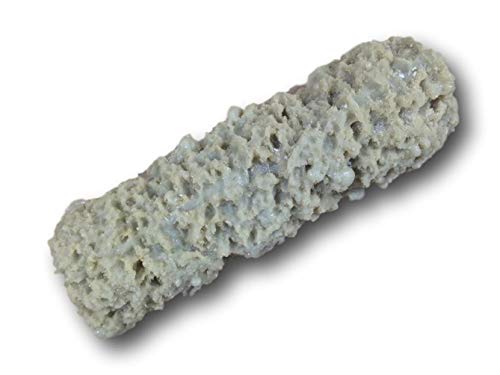Okay, mine isn't NOW but losing hair is one of the major concerns of having weight loss surgery.
First off, you can NOT stop the hair on your head preop from falling out. It’s damaged and will fall out. You CAN HELP the new hair coming in.
The process of losing hair is NORMAL in all humans...We have different phases to each hair follicle even at the best of times.
The three stages of hair growth are the anagen, catagen, and telogen phases. Each strand of hair on the human body is at its own stage of development. Once the cycle is complete, it restarts and a new strand of hair begins to form. The rate or speed of hair growth is about 1.25 centimetres or 0.5 inches per month, or about 15 centimetres or 6 inches per year.
Anagen phase
The anagen phase is known as the growth phase. It begins in the papilla and can last from two to six years.[1][2] The span at which the hair remains in this stage of growth is determined by genetics. The longer the hair stays in the anagen phase, the faster and longer it will grow. During this phase, the cells in the papilla divide to produce new hair fibers, and the follicle buries itself into the dermal layer of the skin to nourish the strand. About 85% of the hairs on one's head are in the anagen phase at any given time.
Catagen phase
Signals sent out by the body determine when the anagen phase ends and the catagen phase begins. The catagen phase, also known as the transitional phase, allows the follicle to, in a sense, renew itself. During this time, which lasts about two weeks, the hair follicle shrinks due to disintegration and the papilla detaches and "rests," cutting the hair strand off from its nourishing blood supply. Ultimately, the follicle is 1/6 its original length, causing the hair shaft to be pushed upward. While hair is not growing during this phase, the length of the terminal fibers increase when the follicle pushes them upward.
Telogen phase
During the telogen, or resting, phase the hair and follicle remain dormant anywhere from 1–4 months. Ten to fifteen percent of the hairs on one's head are in this phase of growth at any given time. The anagen phase begins again once the telogen phase is complete. The preceding hair strand is pushed up and out by the new, growing strand. The process causes the normal hair loss known as shedding.
As WLS patients, we usually enter the telogen phase early...and it is far more than what you normally see...Most of us hit that phase at 3-8 months before our hair returned to it's normal PATTERN. Notice, I did not say normal growth, etc. Many will have their hair change. Mine went from wavy to CURLY! Some go stick straight. And a VERY small percentage stay very thin to the point of needing wigs. But for MOST of us, time will cure it.
The condition is called Telogen effluvium: Telogen effluvium is a scalp disorder characterized by the thinning or shedding of hair resulting from the early entry of hair in the telogen phase (the resting phase of the hair follicle). Emotional or physiological stress may result in an alteration of the normal hair cycle and cause the disorder, with potential etiologies including eating disorders, fever, childbirth, chronic illness, major surgery, anemia, severe emotional disorders, crash diets, hypothyroidism, and drugs. And EACH time you have surgery, the process starts over.
For many of us, the one thing we could do right was our hair. AND we tended to use our hair to hide behind. But thin hair doesn't hide us very well.
What can you do?
Panic? No, it's probably gonna happen so live with it.
NOT have surgery? That leaves us obese.
Or deal with it? That is the best option.
How to deal with it:
Special shampoos
Biotin (all that did for me was grow CHIN hair but others say it works)
But hair loss after WLS is NORMAL, EMBRACE the chance to change!
First off, you can NOT stop the hair on your head preop from falling out. It’s damaged and will fall out. You CAN HELP the new hair coming in.
The process of losing hair is NORMAL in all humans...We have different phases to each hair follicle even at the best of times.
The three stages of hair growth are the anagen, catagen, and telogen phases. Each strand of hair on the human body is at its own stage of development. Once the cycle is complete, it restarts and a new strand of hair begins to form. The rate or speed of hair growth is about 1.25 centimetres or 0.5 inches per month, or about 15 centimetres or 6 inches per year.
Anagen phase
The anagen phase is known as the growth phase. It begins in the papilla and can last from two to six years.[1][2] The span at which the hair remains in this stage of growth is determined by genetics. The longer the hair stays in the anagen phase, the faster and longer it will grow. During this phase, the cells in the papilla divide to produce new hair fibers, and the follicle buries itself into the dermal layer of the skin to nourish the strand. About 85% of the hairs on one's head are in the anagen phase at any given time.
Catagen phase
Signals sent out by the body determine when the anagen phase ends and the catagen phase begins. The catagen phase, also known as the transitional phase, allows the follicle to, in a sense, renew itself. During this time, which lasts about two weeks, the hair follicle shrinks due to disintegration and the papilla detaches and "rests," cutting the hair strand off from its nourishing blood supply. Ultimately, the follicle is 1/6 its original length, causing the hair shaft to be pushed upward. While hair is not growing during this phase, the length of the terminal fibers increase when the follicle pushes them upward.
Telogen phase
During the telogen, or resting, phase the hair and follicle remain dormant anywhere from 1–4 months. Ten to fifteen percent of the hairs on one's head are in this phase of growth at any given time. The anagen phase begins again once the telogen phase is complete. The preceding hair strand is pushed up and out by the new, growing strand. The process causes the normal hair loss known as shedding.
As WLS patients, we usually enter the telogen phase early...and it is far more than what you normally see...Most of us hit that phase at 3-8 months before our hair returned to it's normal PATTERN. Notice, I did not say normal growth, etc. Many will have their hair change. Mine went from wavy to CURLY! Some go stick straight. And a VERY small percentage stay very thin to the point of needing wigs. But for MOST of us, time will cure it.
The condition is called Telogen effluvium: Telogen effluvium is a scalp disorder characterized by the thinning or shedding of hair resulting from the early entry of hair in the telogen phase (the resting phase of the hair follicle). Emotional or physiological stress may result in an alteration of the normal hair cycle and cause the disorder, with potential etiologies including eating disorders, fever, childbirth, chronic illness, major surgery, anemia, severe emotional disorders, crash diets, hypothyroidism, and drugs. And EACH time you have surgery, the process starts over.
For many of us, the one thing we could do right was our hair. AND we tended to use our hair to hide behind. But thin hair doesn't hide us very well.
What can you do?
Panic? No, it's probably gonna happen so live with it.
NOT have surgery? That leaves us obese.
Or deal with it? That is the best option.
How to deal with it:
- Make sure you are as healthy as possible before and after surgery. NOT your hair, YOU. Make sure your protein intake is as high as you can get it. 30 grams daily by 30 days, 60 grams daily by 60 days, 90 grams daily by 90 days and 100 or more daily after that. And those are minimum amounts.
- TAKE your vitamins. ALL of them before and in the month or so after, as many as you can to be on a full regimen by 90 days post op. Don't know what you need? See this list
- Embrace your changing hair style. If you've never had shorter hair, try it...shorter styles give the illusion of fullness/thickness.
Special shampoos
Biotin (all that did for me was grow CHIN hair but others say it works)
But hair loss after WLS is NORMAL, EMBRACE the chance to change!
Last edited:











































